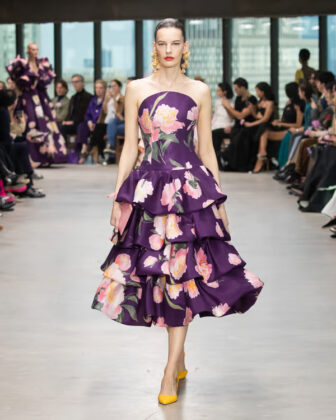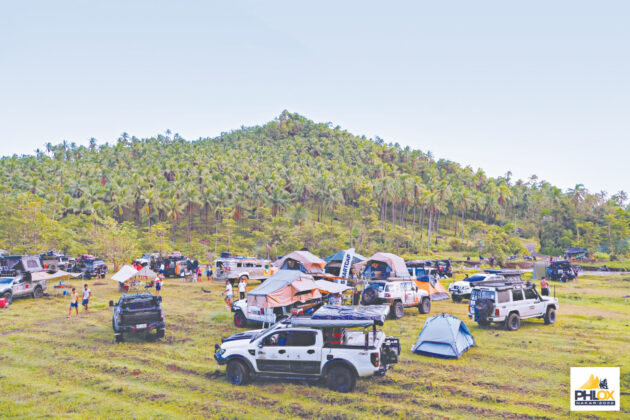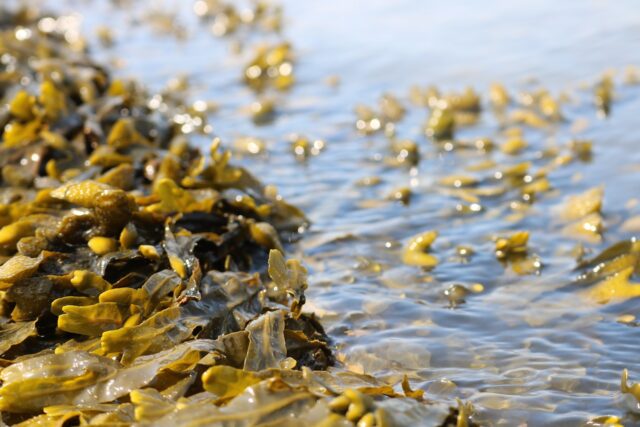THE MOB WIFE has taken a hit out on Coastal Grandma.
So it goes with super-fast TikTok trends. Since the bohemian and beachy Coastal Grandma aesthetic surged two years ago, the internet has worshipped the glamorous Night Luxe, bright-pink Barbiecore, sizzling Tomato Girl, glowing Clean Girl and sultry Office Siren.
These fashion and beauty narratives, promoted by online creators and churned through by consumers, are upending retail. Store chains and beauty brands have to monitor these shifts in style and society to ensure they have the right products in place to capture a viral fashion moment.
The latest trend is Mob Wife, inspired by glamorous women associated with organized crime. It’s characterized by big hair, gold jewelry, leather trousers and the item with which it has become most synonymous — a huge fur coat. The coinciding of the 25th anniversary of the Sopranos with Netflix’s new Griselda mini-series has propelled the look back onto screens and into shoppers’ lexicon.
Mob Wife is already shaking up what we buy. For example, mentions of fur in retailers’ marketing communications typically trail off in January as they promote spring ranges. However, this year, mentions in the US rose 11% as brands continued to push their faux-fur coats and jackets, according to retail intelligence company EDITED.
But what’s often missed is that these trends tend to reflect what’s already online or in stores. It’s difficult to style a look without the right garments being available. Would she even be the Mob Wife without that statement fur coat?
Fur was already part of retailers’ autumn-winter ranges, with the number of faux fur coats and jackets hitting their websites between August and January up 5% compared with the year earlier, according to EDITED. Leather, real and synthetic, has been a staple for a few years now, too. Animal print was poised for a comeback at the start of last year, but it was eclipsed by the more minimalist Quiet Luxury look. Now, despite fewer deliveries to online stores, the Mob Wife buzz has meant new animal print products selling five days faster than in 2023, EDITED’s analysis showed. Similarly, red has been in ascendance, and not just because stores promote the color around Valentine’s Day.
Store chains and beauty brands need to be monitoring key creators, such as trend forecaster Mandy Lee (@oldloserinbrooklyn) and fashion business student Asia Bieuville (@asias.jpg), who described pencil skirts, heels, and Chanel’s Rouge Noir nail varnish as Office Siren back in September. They can jump to market their product as soon as a new narrative is named.
But in order to ensure they have the right ranges to promote, retailers and cosmetics companies should also be scouring society — music, film, TV, runway shows — and the economy to capture the next zeitgeist.
This is more challenging. Night Luxe, characterized by little black dresses, stilettos, and dirty martinis, gained traction in early 2022, just as the world was emerging from the COVID-19 omicron variant. While some stores were quick to stock more formal wear, others were still stuffed with sweatpants, which they were eventually forced to discount.
Meanwhile, some trends are a reaction to what has come before. And these pivots are happening faster than ever.
Last year, Quiet Luxury was a backlash against the logo-heavy streetwear that had dominated. Yet already there are signs that consumers are tiring of minimalism, as Mob Wife shows. This is potentially awkward timing for Kering SA’s Gucci, which has just ditched maximalism for sleeker styles.
Even more confusing is that multiple TikTok trends can exist at once. Forecaster WGSN describes this as “aesthetic plurality,” with hashtags splitting into “ecosystems” and resembling “family structures.” Opposing movements can compete, leading to “trend tensions,” which retailers and beauty brands must navigate.
Perhaps the most striking contrast today is the Clean Girl aesthetic, characterized by glowing skin and minimalist makeup, battling with heavier Mob Wife and Office Siren beauty. There are even hints of a return to the brasher looks of 2016, best known for contouring using different shades of foundation. The latter would be potentially good news for companies such as Estee Lauder, Inc. and L’Oreal SA which will remember that golden age for color cosmetics.
Against this bewildering backdrop, retailers with the fastest supply chains, such as Inditex SA, which can get products from design to stores in a matter of weeks, and Shein Group Ltd., which typically tests the market with 100-200 items before scaling up if they prove popular, have an advantage. But other brands can still jump on a trend by having the option to order more within the fashion season if a product goes viral. And it’s worth remembering that even with the challenges, for all fashion retailers, a plethora of different styles to choose from — particularly if they can be easily worn by different ages and body shapes — are better for sales than a sea of greige.
So what could be the next aesthetic?
Even if we are past peak Mob Wife, because it emerged late in the season and there isn’t a lot of stock left, faux fur will continue to be a big look for autumn-winter 2024.
Meanwhile, fashion and music are coalescing around a western theme. This has been bubbling for a while now, with Coastal Cowgirl (Coastal Grandma, with a cowboy hat). But it has been given fresh impetus by Pharrell Williams sending cowboy boots, turquoise jewelry, embellished tailoring and workwear down the catwalk for Louis Vuitton menswear in January.
Add in Beyoncé and Lana Del Rey making country albums, and we are bound to see Aztec prints, denim, and the sort of Americana produced by Ralph Lauren Corp.’s Double RL brand everywhere. Styles haven’t started to hit the shops yet, but they are expected to arrive in time for summer festivals and endure into the autumn-winter season.
The influence of Sofia Coppola’s Priscilla is also being felt. Sixties shift dresses and pastel colors are fusing with the big hair and bold beauty looks of the era’s country stars to spawn Memphis Glam. And watch out for the Olympics as another breeding ground for trends, particularly as Bernard Arnault’s LVMH will dominate the games.
Coastal Grandma could yet return to haunt Mob Wife. Her relaxed separates and raffia accessories have taken a hiatus over the winter, but they are perfect for the summer months. Retailers and beauty brands should prepare now for her resurrection.
BLOOMBERG OPINION





















